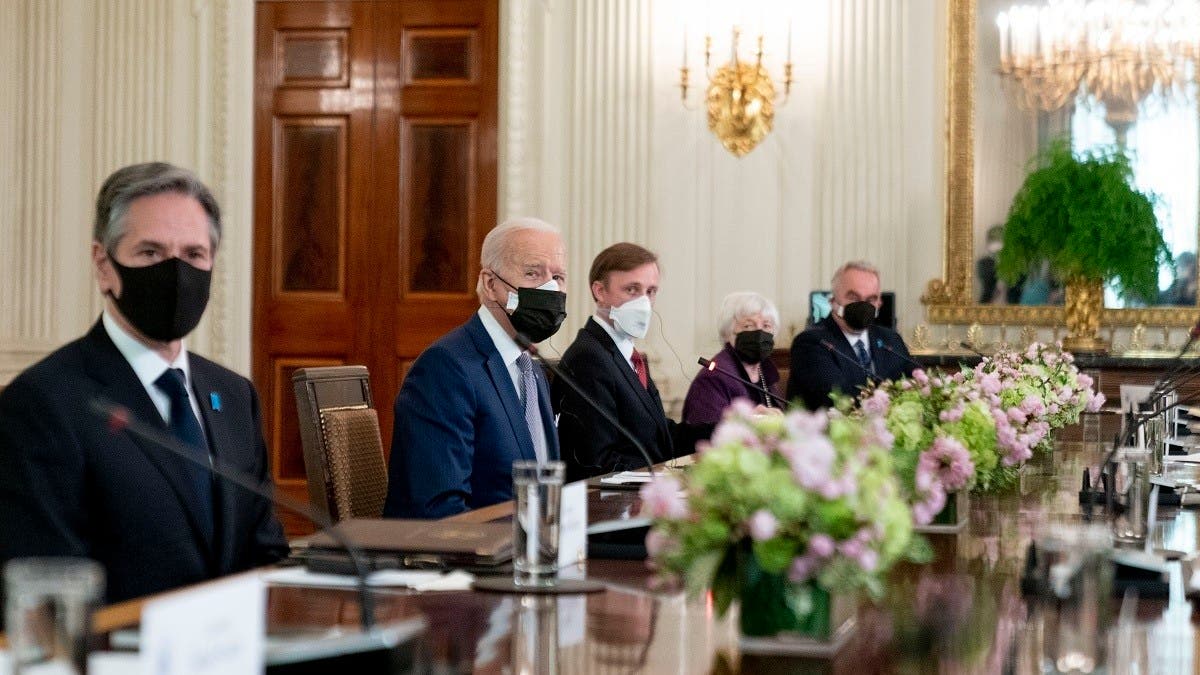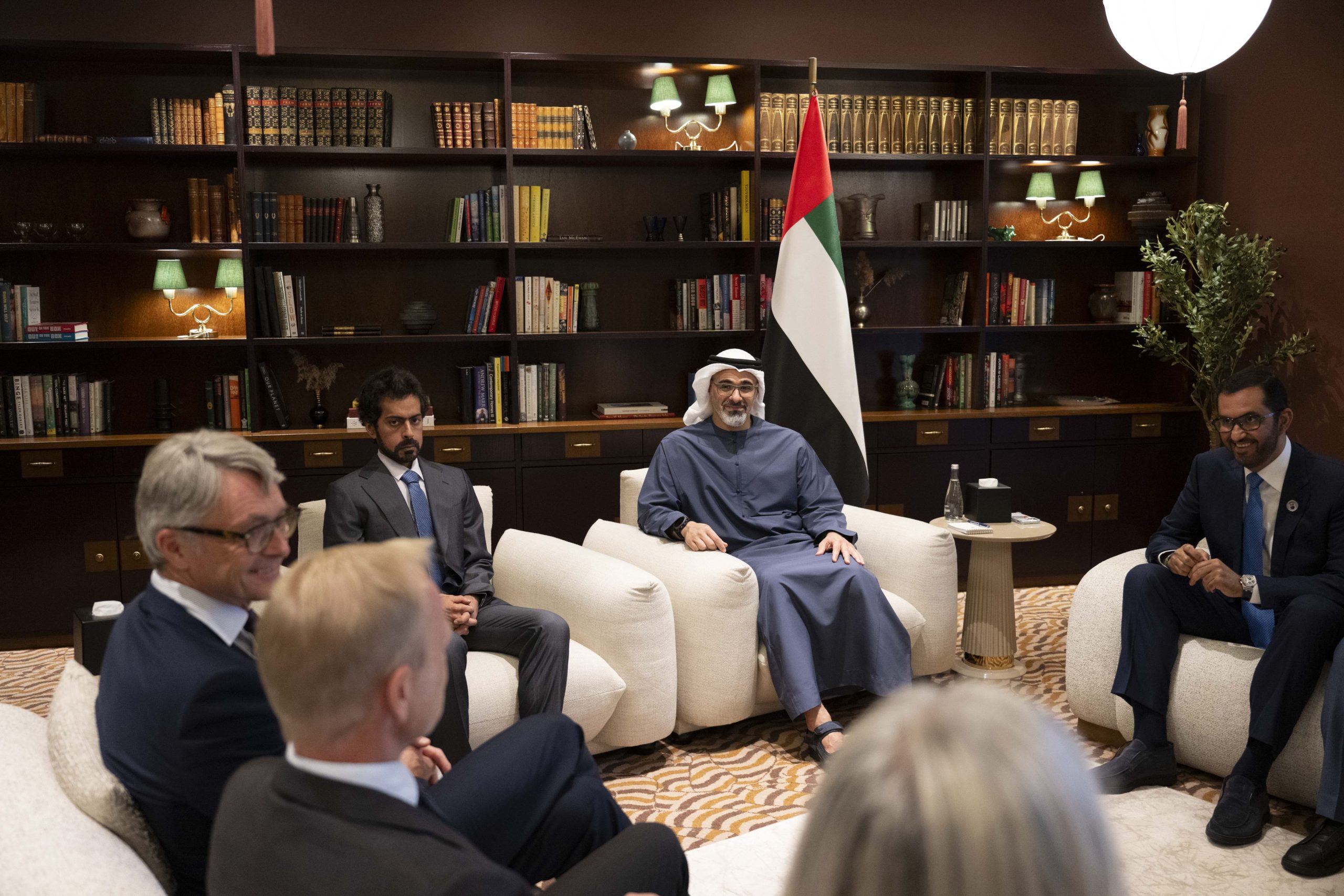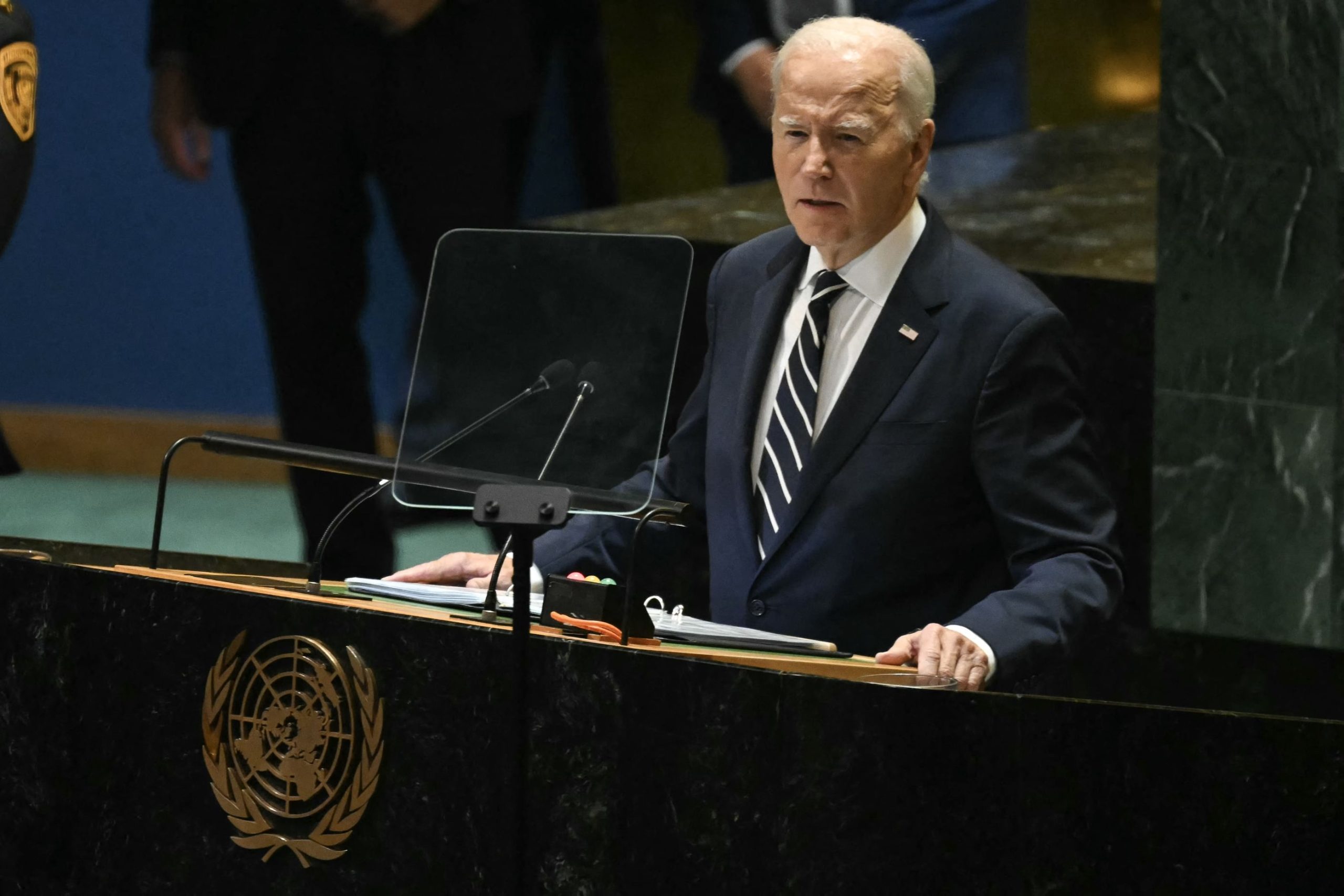US officials spent hundreds of hours over five months debating, crafting and then touting a punishing array of economic sanctions to try to scare Russian President Vladimir Putin off invading Ukraine, but almost from the beginning, many shared the same view: This strategy probably won’t work.
Those concerns became reality Thursday when Russian forces attacked targets across Ukraine and Putin vowed to “demilitarize the country and replace its leaders. Ukraine’s government called the Russian offensive a “full-scale invasion.” In a statement late on Wednesday night, US President Joe Biden said that he would imminently announce “further consequences for Russia,” in addition to sanctions unveiled earlier in the week.
For the latest headlines, follow our Google News channel online or via the app.
Biden on Tuesday had set out a partial “first tranche of sanctions” — a modest package that underwhelmed political observers and financial markets — then followed up with additional measures the following day, including sanctions against Nord Stream 2 AG, the company that built the $11 billion natural gas pipeline connecting Russia and Germany. Biden’s aides have said they’re holding heavier punishments in store — but behind the scenes, there’s persistent skepticism about the strategy.
More than a dozen current and former US officials, many of whom helped assemble the response, told Bloomberg News they’ve been deeply dubious that sanctions would change Putin’s behavior. Yet after Biden made clear last year that the US would not send troops or heavy weapons to Ukraine, there were no other solid options. It was left to his team to try to prove, for the first time, that the threat of economic warfare against a major adversary like Russia would suffice when military deterrence wasn’t an option.
As US leaders grew wary of repeating military debacles in Iraq and Afghanistan, the relative ease of imposing economic sanctions has made them the foreign-policy option of first resort, despite a growing body of evidence that they often fail to achieve their goals. In some cases, experience has shown that sanctions only entrench undesirable behavior from the parties they target. Those limitations are compounded by the prospect that the toughest sanctions on Russia — those that might actually alter Putin’s behavior — would also imperil the US and global economies, already beset by surging prices for oil and other commodities.
“The tool of sanctions has become a tired tool,” said Stephen Biegun, the former deputy secretary of state under Donald Trump and a veteran of other Republican administrations, who helped formulate US policy toward North Korea. Biegun said Biden’s administration has no good options for countering Putin, but the use of sanctions ”has not seemed to significantly alter the behavior of any foreign party whose actions are of concern to the United States.”
The first wave of sanctions certainly did not deter Putin, who announced the Russian offensive in a televised address and said he aimed to oust what he called “the Kyiv regime.” Putin said he was taking action in part to protect civilians in separatist regions from Ukraine’s military, though there was no evidence they were under any threat of attack.
Shortly afterwards, Russia launched a barrage of missile and artillery attacks. Ukraine’s border guard said that it was being shelled from five regions, including from Crimea in the south and Belarus to the north, as Russian tank columns moved into the country. Ukraine’s Interior Ministry said that the capital, Kyiv, was under attack and urged citizens to go to shelters.
Biden’s team — some of whom had criticized Trump and his predecessors for using sanctions too often and without plans for lifting them — ultimately adopted a strategy with sanctions at its center. On Wednesday morning, a person familiar with the administration’s thinking had acknowledged “an air of inevitability hanging over the prospect of a full Russian invasion,” but said that’s spurring a sense that “we’re damn sure going to try to counter Putin’s plans with meaningful sanctions.” That person, like others interviewed for this story, asked not to be identified discussing internal deliberations.
Another senior administration official pushed back against such pessimistic views. Sanctions are only one portion of the administration’s effort to deter an invasion, the official said, and the administration has been “clear-eyed” about the prospect that Putin might choose to invade. But a more basic goal has been to try to convince the Russian leader that doing so would result in united opposition from western nations, undercutting Russia’s economy and its technological prowess in the future, the US official said.
The stakes are high: The US response must also serve as a message to other adversaries. Looming largest among those is China; many top US officials fear a soft touch on Russia might serve to encourage a Chinese invasion of Taiwan. If Russia’s economy emerges unscathed, or if western nations descend into squabbling over individual sanctions, the intended message will backfire.
“Think if Russia’s aggression in the heart of Europe went unchecked — possibly the largest land invasion in the post-Cold War era,” Deputy National Security Adviser Daleep Singh told reporters on Feb. 18. “Think of the questions that will be asked about which other countries could be bullied by an autocrat looking to exert a sphere of influence. Those are costs we’re not willing to tolerate.”
The initial set of US sanctions — aimed at two Russian banks that serve the Kremlin and the military, at Russian elites close to Putin, and at Russian sales of sovereign debt abroad — drew few plaudits. Officials say they’ve held additional measures in reserve that promise real economic shock and awe. One such plan would target state-owned Russian banks’ ability to transact in dollars. Some top banks would face additional restrictions, such as asset freezes. The US has also warned of imposing limits on the sale of goods with complex American technology such as microchips, an attack that would hit Russia’s aviation and oil sectors as well as its military.
“The scale we’re talking here is fairly unprecedented,” said Justine Walker, head of global sanctions and risk at the Association of Certified Anti-Money Laundering Specialists. She was describing the full menu of measures that the US has foreshadowed, but not yet unleashed.
In recent years, US officials have lodged economic sanctions against parties ranging from a retired politician in Albania to the prosecutor of the International Criminal Court to the children of Communist Party officials in China’s Xinjiang region. The prospect of strangling Russia’s economy represents a much stiffer challenge.
As the world’s 11th biggest economy and a nuclear-armed state, Russia would be the largest and most powerful nation ever to face such crippling punishments. It is the world’s biggest exporter of wheat and fertilizer and the third biggest exporter of crude oil and coal, supplying 40 percent of Europe’s energy. It wields one of five vetoes in the United Nations Security Council, and has been instrumental in nuclear negotiations with Iran and North Korea. Russia’s global economic importance means any sanctions that would alter Putin’s calculus and lead him to back down — such as banning energy sales or cutting off all Russian banks from the financial system — would also bring considerable pain to Europe and the US.
“We’re not talking about this being contained to a Russia, Ukraine, European crisis,’’ Walker said. “It will become a global crisis. And this is where the administration and the allies will be thinking very, very carefully.’’
Biden acknowledged that balancing act this week, saying he’d use “every tool at our disposal’’ to keep gas prices from rising. According to three officials familiar with the administration’s thinking, White House Chief of Staff Ron Klain is helping vet key decisions related to the sanctions for their domestic political impact ahead of the 2022 midterm elections.
Biden’s efforts to shore up US-European alliances have added geopolitical challenges. Whereas Trump acted unilaterally, infuriating European officials at times, Biden and his team are determined to make sanctions planning collaborative — limiting their own room to maneuver. For example, US officials had to back off an early hope that their European counterparts would impose drastic limits on Russian banks’ Euro clearing.
One proposal that the administration has so far shied away from would cut Russia off from the Swift financial system, a secure messaging channel that serves more than 11,000 financial institutions and companies in more than 200 countries and territories. Taking that step would likely cause severe damage to European economies and to the livelihoods of ordinary Russians, something the administration has been loath to do. Other options that were discussed but not adopted included limiting Russian coal exports and targeting Putin himself.
In their public rhetoric, US officials have sought to amplify the threats that their sanctions package contains, while playing to Putin’s bigger ambitions. “If Russia wants to sequester itself from western technology, the western economy, and from western financial markets, that is a bad strategic choice for Russia,” Singh said at a briefing this week.
But Russia has been under US-led sanctions since 2014 and has escaped lasting damage. Punishments imposed after Russia invaded Crimea contributed to an estimated 2 percentage-point fall in the country’s gross domestic product. But a January report by the Congressional Research Service noted that over the long run, sanctions have had “a negative but relatively modest impact on Russia’s growth.’’ Much greater harm came from COVID-19 and from a fall in oil prices, the report said.
“The Russian economy has largely adjusted to those sanctions,’’ said Andrea Kendall-Taylor, a senior fellow at the Center for a New American Security. “They have pursued a very significant export substitution policy in other parts of the Russian economy that are now booming.’’ One example: Russia’s agriculture sector, including meat and cheese production, is booming.
Putin has been more blunt. “To hell with those sanctions,’’ he told Itar-Tass in 2020. “It made us use our brains.”
Subsequent US sanctions, which came in response to Russia’s interference in the 2016 election and the Solarwinds cyber hack, haven’t tipped the nation into economic hardship either. Russia announced on Feb. 18 that its GDP grew 4.7 percent in 2021, the most since 2008, fueled by higher oil prices and revived spending after the coronavirus pandemic.
For the new batch, initial estimates based on the Biden administration’s full public list of potential sanctions project they’ll do less economic damage to Russia than the 2014 measures did. New sanctions might push oil prices to $140 a barrel, according to a research note by Capital Economics, a surge that would benefit Russia. Advanced economies could see 2 percentage points more of inflation, given the broader surge in commodity prices, the research group said. Bad news is already largely priced into Russia’s stock markets, but could tank indexes elsewhere.
If Putin hangs on and continues taking aggressive steps — as he’s done since Biden came into office — it’s unclear what additional measures US leaders might contemplate. For now, they’re on a path that some of Biden’s weary foreign-policy staffers described with the same two-word phrase: “It’s grim.” As one put it, the Cuban Missile Crisis lasted 13 days; the crisis on Ukraine’s border with Russia is entering its fifth month. It may end neither soon nor well for western interests.
“There’s no level of economic pain that makes losing Ukraine tolerable for Putin,’’ said Samuel Charap, a senior analyst at Rand Corp. “This is not existential for the US. It is for Russia.”
Read more: Ukraine FM says Russia carrying out ‘full-scale attack’

 World3 years ago
World3 years ago
 World3 years ago
World3 years ago
 Business11 months ago
Business11 months ago
 Entertainment7 years ago
Entertainment7 years ago
 World7 years ago
World7 years ago
 Entertainment7 years ago
Entertainment7 years ago






